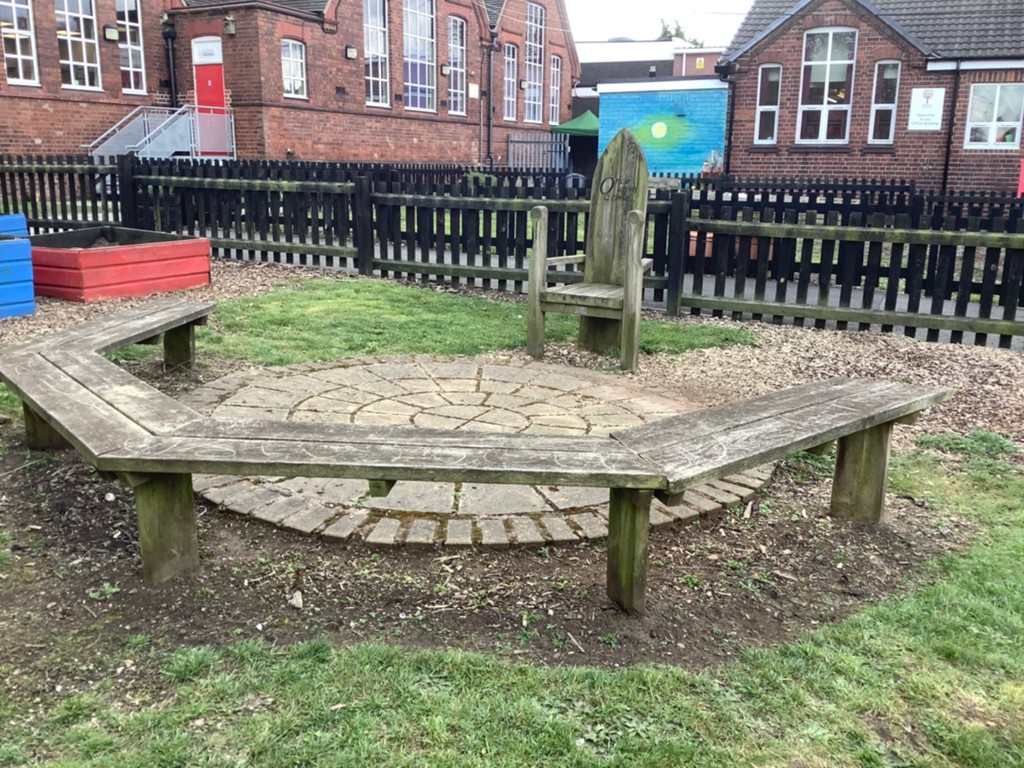Reading 4 Life
Vision and intent
Our aim at Temple Meadow is to make teaching and learning as enjoyable as we can. To that end, we adopt an Irresistible Learning approach to our curriculum – packaging learning in a way that allows us to create memorable and adaptable learning experiences which include all National Curriculum requirements. At Temple Meadow, reading sits at the heart of our curriculum and our aim is to ensure that every child becomes a confident and successful learner. We believe that all pupils deserve a rich curriculum which encourages extensive reading of whole books and other types of texts. We believe that active encouragement of reading for life is a core part of every pupil’s educational entitlement, whatever their background or attainment because extensive reading and exposure to a broad range of texts contribute widely to each pupil’s educational achievement in additionOur aim at Temple Meadow is to make teaching and learning as enjoyable as we can. To that end, we adopt an Irresistible Learning approach to our curriculum – packaging learning in a way that allows us to create memorable and adaptable learning experiences which include all National Curriculum requirements. At Temple Meadow, reading sits at the heart of our curriculum and our aim is to ensure that every child becomes a confident and successful learner. We believe that all pupils deserve a rich curriculum which encourages extensive reading of whole books and other types of texts. We believe that active encouragement of reading for life is a core part of every pupil’s educational entitlement, whatever their background or attainment because extensive reading and exposure to a broad range of texts contribute widely to each pupil’s educational achievement in addition to providing a lifetime of enjoyment. We aim to promote the concept of reading for life and we ensure that we include a range of ‘real books’ within the Curriculum for English as well as the opportunity for sustained reading from a range of other self‐chosen fiction and non‐fiction texts from our school library. At Temple Meadow, we believe in both the importance of developing children’s discrete word-reading skills and comprehension, and the need to engender their love of books and reading. We recognise that these two elements are intertwined: each relies on the other if children are to become life-long readers.Our aim at Temple Meadow is to make teaching and learning as enjoyable as we can. To that end, we adopt an Irresistible Learning approach to our curriculum – packaging learning in a way that allows us to create memorable and adaptable learning experiences which include all National Curriculum requirements. At Temple Meadow, reading sits at the heart of our curriculum and our aim is to ensure that every child becomes a confident and successful learner. We believe that all pupils deserve a rich curriculum which encourages extensive reading of whole books and other types of texts. We believe that active encouragement of reading for life is a core part of every pupil’s educational entitlement, whatever their background or attainment because extensive reading and exposure to a broad range of texts contribute widely to each pupil’s educational achievement in addition to providing a lifetime of enjoyment. We aim to promote the concept of reading for life and we ensure that we include a range of ‘real books’ within the Curriculum for English as well as the opportunity for sustained reading from a range of other self‐chosen fiction and non‐fiction texts from our school library. At Temple Meadow, we believe in both the importance of developing children’s discrete word-reading skills and comprehension, and the need to engender their love of books and reading. We recognise that these two elements are intertwined: each relies on the other if children are to become life-long readers. to providing a lifetime of enjoyment. We aim to promote the concept of reading for life and we ensure that we include a range of ‘real books’ within the Curriculum for English as well as the opportunity for sustained reading from a range of other self‐chosen fiction and non‐fiction texts from our school library. At Temple Meadow, we believe in both the importance of developing children’s discrete word-reading skills and comprehension, and the need to engender their love of books and reading. We recognise that these two elements are intertwined: each relies on the other if children are to become life-long readers.
Cultural capital considerations for Reading 4 Life
Given our context linked to high levels of deprivation, we are aware of the high need to support development of Temple Meadow pupils’ cultural capital. This is key to their future success in their next stage of education and in future life. We plan to ensure that the experiences we provide through our reading curriculum and by connecting learning across subjects, gives them confidence and the capacity to succeed in the future and to support a long term aspiration of all UK pupils achieving in society. With so much competition for children’s time and attention it is vital that we embed a culture of reading into the core of what we do as a school, helping every child to become a lifelong reader.
For many of our children reading is not valued at home and lots of our children don't have books to read so Temple Meadow is the key place where they come into contact with books and it's our job to share our passion and love of reading.
Access to a wide range or texts / books
We undertake and implement plans to ensure there is a wide range of texts within each classroom. Texts include:
- Age-related fiction and non-fiction
- Magazines, newspapers, comics
- Internet based texts, accessed via tablets and PCs
- Audio book
- Ecollins Big Cat website
- Children’s own work (within books and displays).
Teacher's role in supporting R4L
Regular time spent reading aloud by the teacher
Teachers at Temple Meadow regularly read to children. Children can benefit tremendously from being read to aloud. Studies show that children who are read to aloud are more likely to do better in school both academically and socially.
Effective reading aloud time is all about creating a positive reading experience to engage the students, so teachers model their enthusiasm for books and reading them. Teachers do not just read to the class but interact with them: ask questions about what has been read or the pictures they have been shown. This helps improve students’ comprehension of the story. When choosing books to read aloud, a balance is struck between following the students’ preferences and inviting them to try new types of books to expand their horizons and spark new interests.
Actively encouraging a love of reading and promoting a wide range of books
Through discussing books of personal interest, regularly referencing books and promoting different kinds of books, teachers foster a love of reading that is passed onto the children. Teachers also encourage children to read widely by promoting reading and by using class rewards to stimulate this love of reading.
Book corners
At Temple Meadow we want our children to foster a love for books and to develop a positive attitude about reading.
When we open a book, we transport our imaginations to a world purely based on the imaginations of the author.
Our aim is that our Early Years and Key Stage one book corners will let the imagination of our pupils be transported the same way.
We aim for them to be engaging and creative and we ask teachers to:
- transform an area in the classroom into a place that would not only catch the children’s attention but spark their interest and enthusiasm and captivate their imaginations.
- develop a hook to guarantee a buy-in from the pupils.
Organisation and resourcing of Book Corners
Each term, our head boys and girls choose a winner from each year group with the most engaging book corner. Pupils from the winning class get to choose a magazine subscription for their book corner.
Mystery and intrigue
Staff to think of ways to create mystery and suspense in engaging children to read, for example: Bind date with a book; wrapping books in brown paper and adding key words/clues to entice readers in.
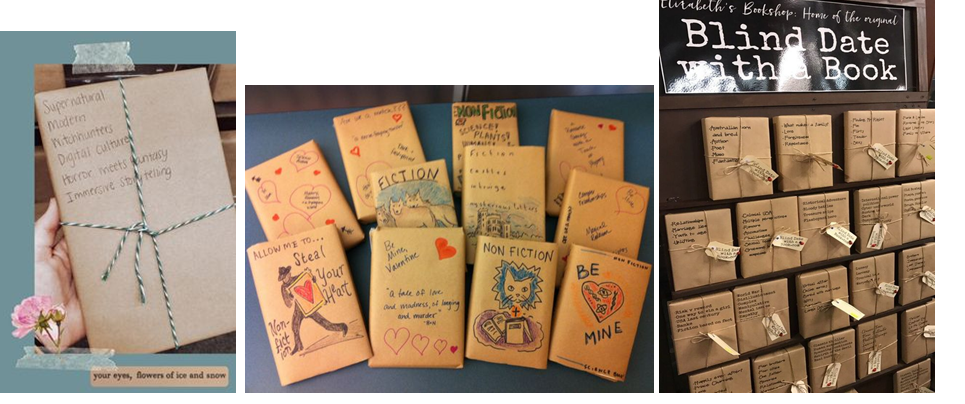
Interaction and discussion
- A set of key questions needs to be displayed so that children can think on when they are reading independently.
- There needs to be children’s work displayed, for example: book reviews, their own versions of a story, photos of the children and staff reading.
Friday favourite
Whichever pupil is star of the week on a Friday, they get to share their favourite book with the class and bring it in.
On the English learning wall is a title called Friday favourites and children and the expectation is that the front cover of the child’s book is photocopied and added to the wall with a photo of the child with a description explaining why they like it.
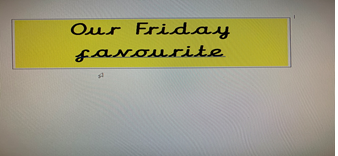
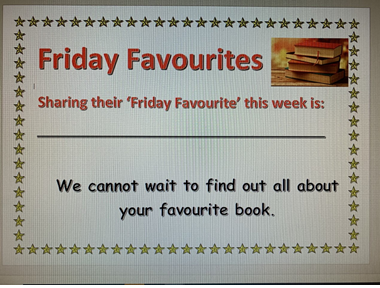
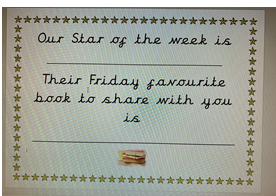
Mystery reader
Every week Nursery and Reception invite their parent mystery reader into school to come and read them a story. This is celebrated in their Early Years Mystery Reader floor book which is displayed in their book corner.
Timetabling
Reading for life slots are built into each classes time table three/four times a week for 20 minutes. This time allows dedicated time for reading for pleasure. Children and teachers get to choose a nice interactive background, e.g. crackling flames in the background. Reading for life sessions involve:
- Children reading out loud
- Teachers reading out loud
- Silent reading
- Peer buddy reading
- Logging into their Ecollins account and reading their book
- Writing books reviews/book recommendations
Guidance for staff when reading aloud
- Do the voices – Try to make sure each character talks differently – this makes the story come to life for the listeners. You could try making them talk higher or deeper, faster or slower, or even in different accents. If you have trouble thinking up voices, ask your audience to give you ideas for how a certain character might talk – they could even read one character’s lines for you...
- Get with the programme – Make sure you have a regular slot in which to read every day. This makes sure you don’t forget about it, and stops everyone forgetting the plot!
- Go for a journey – With a regular reading time every day, the option exists to choose a longer chapter book. It’ll be more of an experience for you and your listeners, and helps build their memory and understanding.
- Keep them guessing – Ask questions every so often to find out what everyone thinks might happen next. This can help to build the suspense and make it more interesting for your listeners.
- Make sure they’re still with you – Recap what’s happened every few pages to make sure your listeners know what’s going on (especially important if they are younger).
- Always leave them wanting more – Stop reading at an exciting point in the story – maybe at the end of a chapter or even in the middle of a sentence! TV dramas use cliff-hangers like this to make sure their audience comes back tomorrow to find out what happened – yours will too.
School library and librarians
Key Stage two children are encouraged to use the School Library to stimulate and support their reading of a wide range of texts from fiction to interest / topic-related non-fiction. Every class, and every child, will have the opportunity to visit the School Library to borrow and explore the books on a weekly basis. (please see our separate library policy)
During Autumn 1 each year, Year 6 pupils are asked to write a letter of application to apply for the job role of School Librarian. Miss Evans will then choose four pupils and will hold a meeting to discuss their job role and expectations. These children are given a Librarian badge.
Home reading
Reading is one of life’s most essential skills. At Temple Meadow Primary School, we hope that all children will develop a love of books, enthusiasm for promoting their reading skills and grow to be confident, competent readers. As a parent or carer, you play a vital role in supporting your child’s reading development, our partnership between home and school is essential for success with this life skill.
How reading is taught at Temple Meadow
Our pupils reading experience is much more than the reading book which comes home from school. Reading is happening all the time in our classrooms and across school. It is taught in English lessons, but children are practising and using their 'reading' constantly across all subjects too.
Home reading by year group
Nursery
Children learn to read in different ways and at different ages. The first part of a child's journey towards being a successful reader starts when a child is a baby and is listening to stories and rhymes. This encourages a love of language and stories and develops a child's vocabulary and understanding of language as they start to become familiar with what words mean and what they look like. In Nursery, children will begin to bring home reading books from the Big Cat Lilac range which match their the Little Wandle Phase 1 Phonics they are learning.
These books are wordless but are very important to their reading development. Early Books allow children to learn how stories work, including the order and direction in which they read, without the pressure of too many words on the page. Children will enjoy talking about the story and discussing what is happening in the pictures. The first step in reading is to use visual prompts to help read the words. The pictures provide lots of opportunities for experimenting with environmental sounds, an important first step in the teaching of phonics. Most Nursery children are already reading before they start school; they will be able to read the supermarket sign above the shops they visit frequently, e.g. McDonalds, Lego and Disney will be easily identifiable to them too.
As the children progress within our Little Wandle Phonic scheme they will begin to bring home Phase 2 Phonic reading books which will support children with decoding words with sounds they are learning in school. These will be Big Cat Phonic reading scheme books.
Our Nursery children will take home a reading book and a library book of their choice. These will be changed weekly. Children who are in our thirty hour group will be heard read twice a week and any other pupils who are not on track; including our bottom 20%. These pupils need to be highlighted yellow on the cells of their heard read sheet. The other pupils in the Nusery cohort will be heard once a week. The teacher/LSP will write a comment about the pupils reading in their reading record which we ask parents / carers to also comment in weekly . Reading books and reading records need to be in school every day. When books are changed, staff need to log the book with the date taken home on their individual reading sheet located in the home reading folder. Library books need to updated on their individual library log, located in the home reading folder.
Reception and Year 1
The children in Reception and Year 1 are exposed to a ‘print-rich’ environment of signs, labels, books, key words, display and role play that all give opportunities for reading. There are also book areas where children can enjoy sharing books, listening to stories and reading. Children are taught daily Phonics through Little Wandle. From children’s half termly Phonic assessments, pupils scores get inputted onto our Little Wandle data base and then book maps are produced to inform staff what book stages the children will need. Children will take home an individual Big Cat reading book matched to the Phonic Phase they are secure in order to match the child’s individual reading ability.
Each child will be heard read once a week by the teacher/LSP to allow staff to monitor children’s independent reading skills, suitability of the book or readiness to move forwards. Any children who are not on track (including our bottom 20% readers) or are in our disadvantaged group will be heard twice a week. These pupils will be highlighted yellow on the heard read sheet. Children will change their reading and library book once a week. Children will also take home a library book of their choice. Children will also have an individual reading record where reading at home should be recorded. The teacher/LSP will write comments about the child’s reading in their home reading record once a week. When books are changed, staff need to log the book with the date taken home on their individual reading sheet located in the home reading folder.
The Hub
The children in The Hub are exposed to a ‘print-rich’ environment of signs, labels, books, key words, display and role play that all give opportunities for reading. There are also book areas where children can enjoy sharing books, listening to stories and reading. Children are taught daily Phonics. Children will take home an individual Big Cat reading book matched to the Phonic Phase they are secure in order to match the child’s individual reading ability. Children will be heard twice a week by the teacher/LSP to allow staff to monitor children’s independent reading skills, suitability of the book or readiness to move forwards. Children will also have an individual reading record where reading at home should be recorded. The teacher/LSP will write comments about the child’s reading in their home reading record once a week. When books are changed, staff need to log the book with the date taken home on their individual reading sheet located in the home reading folder.
Year 2
Children who have passed the Phonic screening assessment in Year 1 will need to carry out a reading Nelson assessment to determine what reading age band they are on. This needs to be recorded on the reading data tracker and recorded on their sticky label on their individual divider. Children will then take home a Big Cat reading book matched to their reading age which is recorded on their sheet in their reading folder. Children who have not yet passed the Phonic screening will be taught daily Phonics through Little Wandle. From children’s half termly Phonic assessments, pupils scores get inputted onto our Little Wandle data base and then book maps are produced to inform staff what book stages the children will need. Children will take home an individual Big Cat reading book matched to the Phonic Phase they are secure in order to match the child’s individual reading ability.
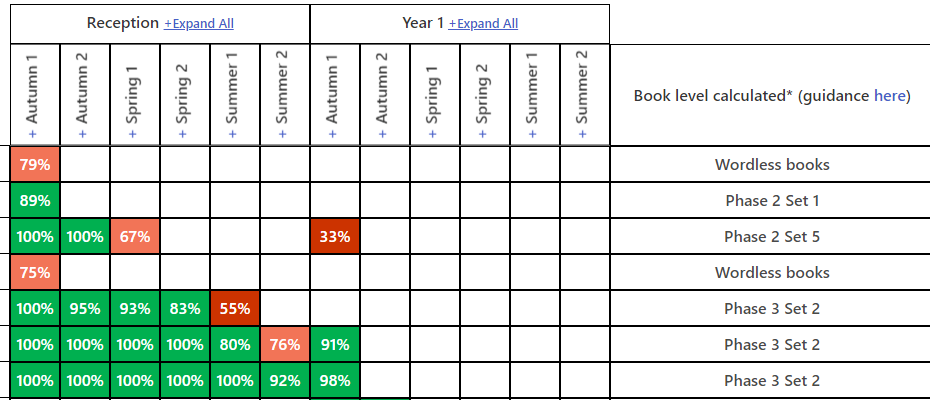
Each child will be heard read once a week by the teacher/LSP to allow staff to monitor children’s independent reading skills, suitability of the book or readiness to move forwards. Any children who are not on track (including our bottom 20% readers) or are in our disadvantaged group will be heard twice a week. These pupils will be highlighted yellow on the heard read sheet. Children will change their reading and library book once a week. Children will also take home a library book of their choice. Children will also have an individual reading record where reading at home should be recorded. The teacher/LSP will write comments about the child’s reading in their home reading record once a week. When books are changed, staff need to log the book with the date taken home on their individual reading sheet located in the home reading folder.
Years 3,4,5,6
Termly the children will be carrying out a reading benchmark assessment which assesses instructional and independent reading levels using unseen and meaningful texts. These reading levels then need to be matched up to the appropriate reading band using our Big Cat reading scheme. Everytime a child does a reading assessment this must be added to their individual sticky label on their divider which is kept in their reading folder. If a new child starts or staff think a child is reading their book too easily then a reading assessment needs to be carried out before the termly assessment. When books are changed, staff need to log the book with the date taken home on their individual reading sheet located in the home reading folder. Termly reading assessments scores need to be added to the home reading assessment tracker Autumn 1, Spring 2 and Summer 2.
Children who have not yet passed the Phonic Screening will be taught daily Phonics through Little Wandle. From children’s half termly Phonic assessments, pupils scores get inputted onto our Little Wandle data base and then book maps are produced to inform staff what book stages the children will need. Children will take home an individual Big Cat reading book matched to the Phonic Phase they are secure in order to match the child’s individual reading ability.

Free reader folder
Children who have a reading level beyond the age of ten are classed as a free reader. Free readers come off the Big Cat reading scheme and get to choose a book of their choice from our free reader selection which is located in the library. When a child becomes a free reader, their divider and sheets need to be transferred into the free reader folder. Children will change their book every three weeks and this is recorded on their free reader sheet. Children are heard read once every three weeks and this is recorded on the home reading sheet in their folder. Children will also have a reading record which parents should comment in when listening to their child read at home. When the staff hear the children read they will stamp the child’s reading record with a (heard read stamper.)
Non-free reader folder
Children who are not a free reader are heard read once a week and books are changed weekly. This is recorded in their reading folder. Children will also have a reading record which parents should comment in when listening to their child read at home. When the staff hear the children read they will stamp the child’s reading record with a (heard read stamper.)
Disadvantaged/ pupil premium children
Children who are on the schools diasvantaged/FSM register get heard twice every three weeks if they are a free reader or twice a week if they are a non-free reader which is tracked on the heard read sheet so both columns, for example for weeks 1 and 2 will be initialled. They will also get a heard read stamp in their reading record.
Children not on track
Children who are not on track in relation to their reading age; including your bottom 20% readers will also need to be heard twice every three weeks if they are a free reader or twice a week if they are a non-free reader and this is recorded on the heard read sheet so both columns, for example for weeks 1 and 2 will be initialled . They will also need a heard read stamp in their reading record.
Lost reading books
If a pupil does not bring their reading/library book after two weeks they will be issued with a lost book letter and a reminder will be sent home to return the book. Children will be issued to the parent requesting a £5.00 fee to cover the cost of the book. The pupil will then be issued with a new reading book regardless (as it is so important children continue to read). The teacher will notify the office who will set up the fee on parent pay for parents to pay. If the pupil misplaces two separate reading books then they will be required to keep their reading book in school and will not take it home. If parents/carers do find the lost book, they need to take the book to the school office as they will take off the payable fee on ParentPay.
Reading record
All children whole school will have a reading record where parents are encouraged to date and write a comment weekly when they have heard their child read. Nursery, Reception and Year 1 staff also write a weekly comment once they have heard a child read and date the comment with their initial.
Years 2-6 staff date in the reading record and use the ‘I have read with an adult today’ stamp everytime they hear a child read.
Enrichment
To build Cultural Capital to support lifelong success as learners and citizens the curriculum at Temple Meadow must be experiential, hands on and imaginative. We value enrichment to support our values.
Every year our Reception children walk to our local library and learn about what a library is and how to borrow books.
Outdoor learning
Where possible learning can be taken outside. We have a story telling chair which can be used to engage children. Children can retell stories on the chairs and the use the space to role-play stories.
